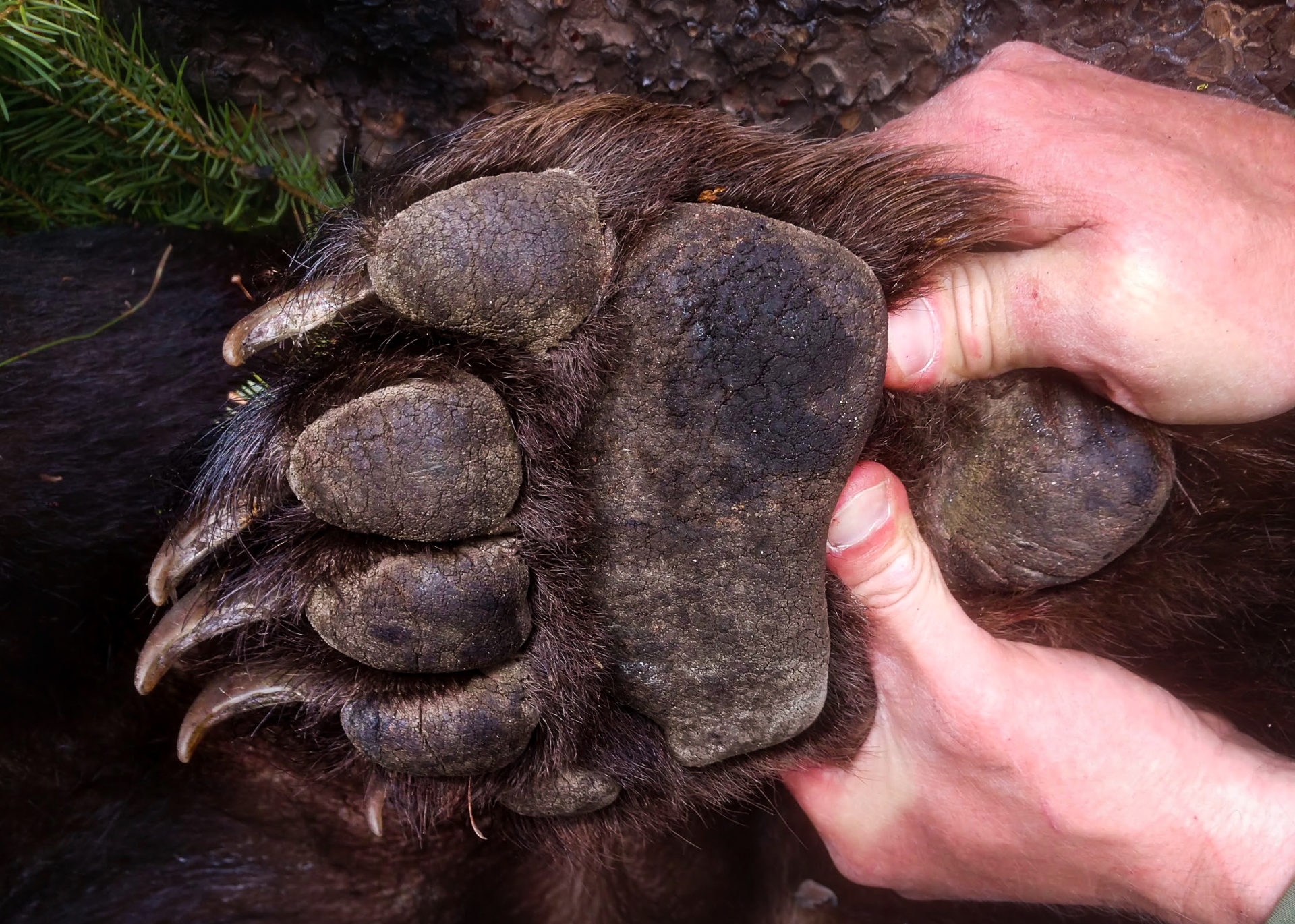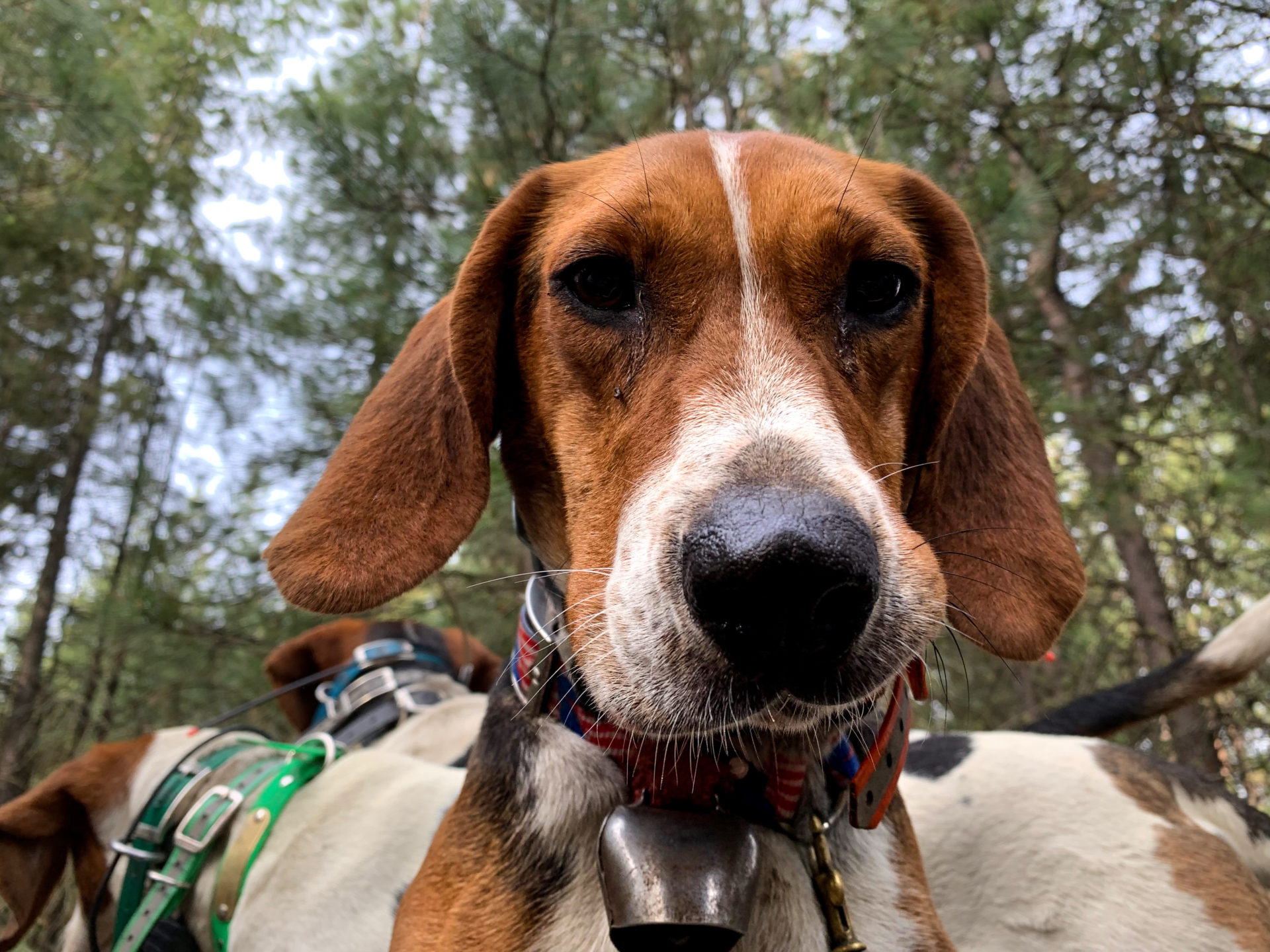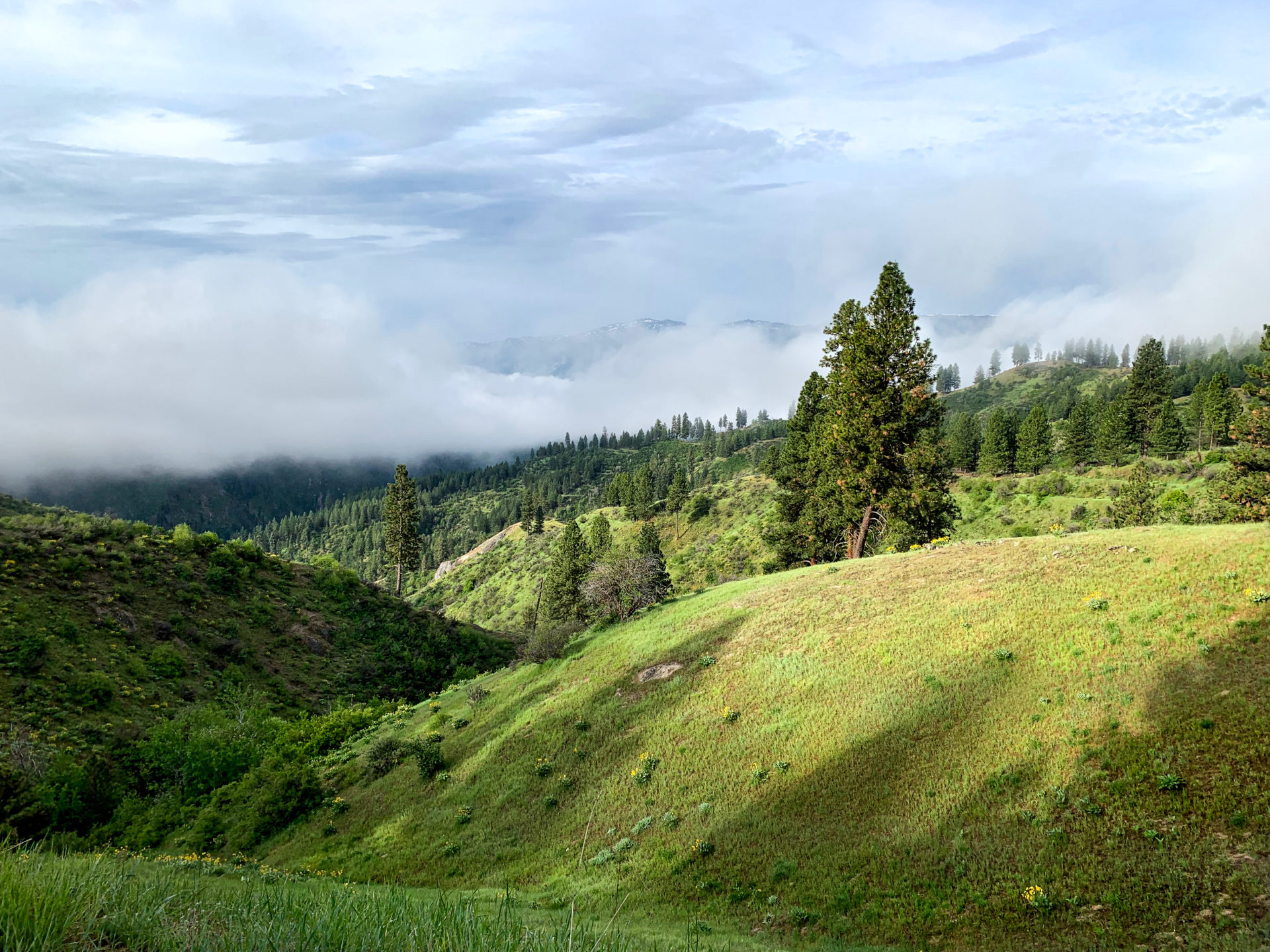
The big, chocolate-colored boar was exactly the type of bear I’d dreamed of for years. This was the third time he’d bayed up on the ground in heavy cover and it was my last chance. Our crew had been after him for eight hours and, with evening approaching, there wasn’t time for another chase.
The guide, the dogs and I were all tired and frustrated. If the bear decided to bail, we’d have to pull the dogs and hike a couple of miles to the nearest road and almost 2,000 feet downhill. After the effort we’d put in, it would’ve been a serious blow to group morale.
A Hairy Issue
In 1992, Colorado voters approved a ballot initiative that banned spring hunting along with the use of hounds and bait for hunting black bears. It was one of the earliest successful efforts by animal rights groups like the HSUS and PETA to outlaw hunting by species, season and method of take. The campaign worked because it targeted urban non-hunters, who make up a large percentage of the voting public and can be emotionally attached to bears.
I’ll admit, there was a time when I had a pretty negative—albeit uneducated—view of the use of hounds and bait. It turns out I wasn’t the only one.
In a 2013 Denver Post article, renowned hunting author David Petersen was quoted lauding Colorado’s ban on bear hunting methods and spring seasons. He talked about how he tried to formulate his own opinions through firsthand experience.
“I didn’t know jack about it,” Petersen said. “So I did [it] and sat over a five-gallon bucket of fermented grain for a couple of nights, and that was the extent of it.
“The whole idea just put me off,” he continued. “It dishonors the animal, it dishonors the hunter and it dishonors hunting. And it was incredibly unpopular among non-hunters. Once I educated myself, I was against it.”
The article’s author, Scott Willoughby, also cited some interesting figures from Colorado Parks & Wildlife: “Since the 1992 abolition of spring bear hunts—along with the ban of hunting bears with dogs and bait—the number of bear hunters has increased, as has the percentage success rate among bear hunters, number of bears killed, size of bears killed and the income generated for Colorado Parks and Wildlife through bear tag sales.”
Hunting bears in the spring, over bait or with hounds is certainly a controversial cultural issue in our country, even among hunters. It’s also no secret that non-hunters are more willing to support hunting if the main purpose is acquiring food. Treated right, black bear meat is versatile and delicious, and their fat can be rendered into oil ideal for frying and baking. Sadly, unlike most other states, Idaho, Wyoming and Nevada don’t require hunters to keep and eat black bear meat.
Hunters have enough enemies as it is without leaving meat in the woods to rot, and such lax salvage regulations feed a broader narrative about bear hunting. The use of hounds and bait are highly misunderstood hunting methods and those most commonly weaponized by animal rights groups.
Just this year, anti-hunting advocates sued the federal government to end bear baiting on all U.S. Forest Service lands in Wyoming and Idaho, despite the fact that wildlife biologists and managers in those states consider baiting a valuable black bear management tool.
In 2014, the Maine Department of Fisheries and Wildlife opposed a ballot initiative to ban baiting and hound hunting for bears.
“The state’s bear management program is based on 40 years of scientific research and is led by two of the country’s most respected and experienced bear biologists,” Wildlife Division Director Judy Camuso wrote.
“Eighty percent of Maine’s bear harvest is taken by hunters using bait,” she continued. “Baiting allows hunters to be more selective in choosing a bear and to make an ethical shot, which is otherwise difficult in our dense forests. However, even with bait, only one out of every four hunters is successful in harvesting a bear.”
Learning from Experience
Early on the first morning of the hunt, we were driving down a logging road on National Forest lands. The dogs—a mix of Walker, Bluetick and Black-and-Tan hounds—struck up a bear. These dogs can pick up a scent from all the way up on their perch in bed of the truck. Their increasingly loud baying let Casey, a third-generation Idahoan houndsman and guide, know it was a time to park the rig and cut the lead dog loose.
Lead dogs are chosen for their strong scent-trailing abilities, speed, focus and drive. Casey’s lead dog took off and he followed. A few minutes later he radioed in letting us know we had a “race” going on up a steep, timbered canyon. He instructed us to “dump” the rest of hounds and start hiking.
About a half mile later, I could hear distant baying. Casey checked the GPS unit, which carries a collar signal for each dog, and saw that their collars were transmitting a “treed” signal, meaning the dogs had caught up with the bear and chased it up a tree. We arrived after hiking uphill another half mile through thick stands of lodgepole pine and Douglas fir.
Casey pointed out the bear, which was about 50 feet in the air up a big Douglas fir. We quickly found a spot to get a good look to determine sex and age.
Physical clues indicated that this bear wasn’t mature. It had a long, pointy, dog-like snout, ears that appeared large for its head size and a lanky frame. After several minutes of watching the bear through my binoculars, I spotted nipples on its belly. It was clearly a young sow.
We checked the area for cubs and found none. It would have been perfectly legal for me to shoot that bear, but it wasn’t what I wanted to kill.
We rounded up the hounds and headed back to the truck. There was plenty of time to find another bear, and I’d already learned a valuable lesson. It was unnecessary to make a snap decision that would lead to the death of a small, young bear that might have cubs now or in the future.
Anti-hunters often argue that spring bear hunting with hounds and bait orphans young cubs. Colorado’s 1992 ballot measure stated it clearly: “It is the intent of the voters of Colorado in adopting this measure to prohibit the taking of black bears when females are rearing their cubs.”
In reality, sows rear their cubs year-round, not just in the spring. Spot-and-stalk bear hunters might actually be more likely to kill sows, without the ability to inspect bears up close in the way bait and hounds allow. In states where baiting and hound hunting is legal, there are no warning signs that bear populations are suffering.
In fact, throughout their range, black bear populations are on the rise. In Maine, a state where anti-hunters have repeatedly and unsuccessfully attempted to outlaw baiting and hounding practices, black bear numbers have risen from 23,000 animals to more than 35,000 in the past 15 years. In Colorado, a growing black bear population is linked to increasingly poor elk calf recruitment rates.
Anti-hunters (and some hunters) also argue that hound hunting violates the rules of fair chase. Sure, we “caught” that first bear pretty easily, but I was about to find out how just hard these hunts can be.
A New Perspective
That’s what we did, but even with the extra dogs the bear still wouldn’t tree. He just kept heading downhill into steeper, nastier country, occasionally stopping or “baying up” on the ground.
This kind of bear infuriates both guides and dogs. Bears can walk forever in country too steep and nasty for many hunters to get through. If the hunter can’t catch up, the hounds may permanently lose the will to chase a bear that won’t tree.
After a short discussion, the other guides drove their two hunters down the road to set up about 2,000 feet below our position. The road followed a stream through the bottom of a narrow canyon, and the hope was that the bear would keep heading downhill and eventually cross in a spot where they could cut him off.
Casey and I headed down the ridge towards where the bear was bayed up, plowing through a mile of thick brush and dropping 1,000 feet in elevation. The GPS and the barking hounds told us we were within 50 yards, but it was impossible to see the big, angry boar. At 20 yards, we could see the flash of a hound every few seconds, but no bear. At 10 yards, we finally saw him.
I didn’t have a lot of experience judging bears, but this was clearly a large one. It looked as though he had no neck, his enormous head sprouting directly from his massive shoulders.
“Holy shit, that’s a big bear,” Casey whispered.
I got into position for a shot and waited for the dogs to clear. Then just like that, he vanished.
Once more, the hounds chased the bear and we chased the hounds. The bear dropped off the spine of the ridge and into a side canyon where the brush was even thicker and the slope steeper. Casey let me know that, at this point, we didn’t have a choice. We had to keep going since the bear wasn’t headed toward the road.
The truth was it didn’t matter. Both of us would have kept going anyway.
An hour later, we caught up with the hounds. Again, we couldn’t see a thing until we were 10 yards away. There was a small window through the brush for a shot, but we had to be sure the dogs were clear. Seconds later, the bear disappeared again.
This time he side-hilled across several deep draws and finger ridges. He was more than a mile away and still moving. Eventually, he stopped.
It took a long time to get there, but the dogs held the bear while we cut the distance. It was now late afternoon. This was about to end, one way or the other. If we didn’t kill the bear this time, there wasn’t going to be another chance.
Things played out just as they had twice before, except this time we had to get even closer before we could see the bear. When the guide pulled three of the hounds clear of the melee, the bear wasn’t more than 15 feet away, backed up against the thick trunk of an ancient Douglas fir. I was completely unnerved being that close to a large, agitated bear. But this time he wasn’t going anywhere.
The bear died quickly. Lowering my rifle, I didn’t have any doubts about the fair chase ethics of hound hunting. At times, things had been miserable, grueling and scary, but nothing I’d done that day had felt cheap, easy or wrong.
It’s clear to me now that it’s not hunting bears in the spring, or over bait, or with hounds that dishonors the animal or threatens our model of wildlife conservation. It’s how hunters conduct themselves before and after the kill that ultimately determines right and wrong.
Hiking out of that brush-choked hellhole with a heavy pack wasn’t a pleasant experience—I stumbled and fell every few steps, got scratched up pretty badly and ran out of water—but, eventually, I reached the bottom with a trophy-sized load of meat and fat that was every bit as valuable as any skull or hide. It was a glorious end to a hunt I’ll never forget.








